|
|
|
 |
 |
 |
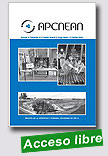 |
Boletín de la APCNEAN – Especial – Noviembre de 2014
Asociación de Profesionales de la Comisión Nacional de Energía Atómica y la Actividad Nuclear (APCNEAN), Noviembre 2014, 230 p.
Este año –2014– que ya está finalizando, se ha convertido en una fecha distintiva para el sector nuclear argentino, debido a que han confluido, mes tras mes, una serie de acontecimientos y aniversarios emblemáticos que son orgullo, no sólo para quienes pertenecen al ámbito nuclear, sino para todo el país. Esto es algo que la Asociación de
|
Profesionales de la Comisión Nacional de Energía Atómica y la Actividad Nuclear (APCNEAN) no ha querido pasar por alto, así que, después de una prolongada interrupción de la publicación de nuestro Boletín, no porque no se hayan producido hechos o novedades en nuestra Asociación –que siempre continuamos dando a conocer a través de nuestra página web– sino más bien por razones adjudicables a cuestiones de organización, hemos decidido elaborar este número especial debido a que consideramos que cada uno de esos hechos y aniversarios a los que hacemos referencia, deben ser destacados con mayúsculas, porque todos ellos son producto del esfuerzo, la capacidad y dedicación de nuestros profesionales que han sostenido su compromiso con la actividad nuclear, aún en las épocas, no tan lejanas, en que las perspectivas para los científicos y técnicos de nuestro país eran desoladoras.
Extraído de:
http://www.apcnean.org.ar/arch/807f1897bba00ae7f5a8ba28cfd1f2ca.pdf |
 |
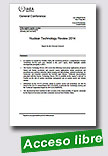 |
Nuclear Technology Review 2014
IAEA, 17 July 17 1204, 72 p.
In response to requests by Member States, the Secretariat produces a comprehensive Nuclear Technology Review each year. Attached is this year’s report, which highlights notable developments principally in 2013.
The Nuclear Technology Review 2014 covers the following areas: power applications, advanced fission and fusion, accelerator and research reactor applications, animal production and greenhouse gas emission reduction, digital |
imaging and teleradiology, radiation technology for wastewater and biosolids treatment and harmful algal blooms. Additional documentation associated with the Nuclear Technology Review 2014 is available on the Agency’s web site1 in English on the role of nuclear knowledge management and on nuclear power and climate change; Information on the IAEA’s activities related to nuclear science and technology can also be found in the IAEA’s Annual Report 2013 (GC(58)/3), in particular the Technology section, and the Technical Cooperation Report for 2013 (GC(58)/INF/5); The document has been modified to take account, to the extent possible, of specific comments by the Board of Governors and other comments received from Member States.
Extraído de:
http://www.iaea.org/About/Policy/GC/GC58/GC58InfDocuments/English/gc58inf-4_en.pdf |
 |
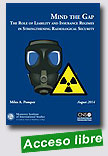 |
Mind the Gap - The Role of Liability and Insurance Regimes in Strengthening Radiological Security
James Martin Center for Nonproliferation Studies, August 2014, 16 p.
Previous studies have indicated that the threat of radiological terrorism could be reduced by the substitution of non-isotopic alternatives for high-risk radiological sources, where technically and economically feasible.
Users of these sources have yet to widely or expeditiously implement this recommendation, however, in large part because the price of isotopic sources is often lower than that of non-isotopic alternatives. One reason for this differential is |
that the price a user pays does not accurately incorporate the economic risks of damage to incomes and property should a terrorist radiological attack occur. This failure, in turn, stems from the nature of liability and associated insurance regimes covering radiological sources, which lack transparency and clarity.
To reduce the threat of a terrorist attack, therefore, it would be helpful to establish legal and insurance mechanisms in order to bring the market costs of high-risk sources closer to actual social cost in order to provide more accurate information to radiological source users about the risks they carry in employing such sources, i.e. the likelihood of an attack or accident and their potential costs.
Similarly, measures to improve the security of radiological sources by implementing best practices in security procedures and physical protection measures would also serve to reduce the risk from radiological terrorism, as would more rapid disposal of disused sources. However, in the absence of clearer legal requirements, such rules and efforts can impose clear costs upon users, while the benefits to society of decreased risks do not make it onto users’ bottom lines. That has meant that, in responding to greater public concerns about radiological terrorism after the 9/11 attacks, governments, including the United States, have taken it upon themselves to institute emergency measures to improve source security, often using public funds. However, these measures are less than optimal, have been far from universally implemented, and upgrades could impose costs on taxpayers for many decades to come. Moreover, even the United States, the lead country in spending on these efforts, routinely sacrifices radiological security to other budget priorities.
It would therefore be useful for governments to consider measures that would shift more of the economic risks of maintaining such sources onto users in order to incentivize them to either step up security, dispose of disused sources, or switch to non-isotopic alternatives. New liability and insurance rules and laws and related measures could be a step in that direction. To investigate appropriate steps, the James Martin Center for Nonproliferation Studies (CNS), with the support of King’s College London, held a June 2014 workshop in London under Chatham House rules with technical experts involved in insurance, liability law, nuclear and radiological science, and policy makers. This report is based on that workshop as well as additional research.
Extraído de:
http://www.nonproliferation.org/wp-content/uploads/2014/08/Mind_the_Gap.pdf
|
 |
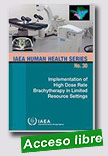 |
Brachytherapy is an essential component of the curative treatment of cervical cancer, a disease with high incidence in many developing countries The IAEA supports the use of high dose rate brachytherapy for centres with a large number of patients with this disease. HDR brachytherapy is also used in other common cancers such as breast cancer, lung, oesophagus and prostate. This publication provides guidance
|
to radiation oncologists, medical physicists and planners on establishing and operating a high dose rate brachytherapy unit with modern standards and presents the main issues to be addressed for its effective and safe operation.
Extraído de:
http://www-pub.iaea.org/books/IAEABooks/10355/Implementation-of-High-Dose-Rate-Brachytherapy-in-Limited-Resource-Settings
|
 |
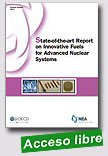 |
State-of-the-art Report on Innovative Fuels for Advanced Nuclear Systems
Nuclear Energy Agency (NEA), 2014, 193 p.
Development of innovative fuels such as homogeneous and heterogeneous fuels, ADS fuels, and oxide, metal, nitride and carbide fuels is an important stage in the implementation process of advanced nuclear systems. Several national and international R&D programmes are investigating minor actinide-bearing fuels due to their ability to help reduce the radiotoxicity of spent fuel and therefore decrease the burden on
|
geological repositories. Minor actinides can be converted into a suitable fuel form for irradiation in reactor systems where they are transmuted into fission products with a significantly shorter half-life.
This report compares recent studies of fuels containing minor actinides for use in advanced nuclear systems. The studies review different fuels for several types of advanced reactors by examining various technical issues associated with fabrication, characterisation, irradiation performance, design and safety criteria, as well as technical maturity.
Extraído de:
http://www.oecd-nea.org/tools/publication?query=&div=&lang=&period=6m&sort=
title&filter=1#p6895
|
 |
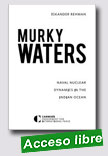
|
Murky Waters - Naval Nuclear Dynamics in the Indian Ocean
Carnegie Endowment for International Peace, 2015, 82 p.
More than five years have passed since India launched its first ballistic missile submarine (SSBN) in July 2009. Meanwhile, Pakistan formally inaugurated a Naval
Strategic Force Command headquarters in 2012 and has declared its intent to develop its own sea-based deterrent. As India and Pakistan develop their naval nuclear forces, they will enter increasingly murky waters. By further institutionalizing relations between their navies and by insisting on stronger |
transparency with regard to naval nuclear developments, both countries may succeed in adding a greater degree of stability to what otherwise promises to be a dangerously volatile maritime environment.
Extraído de: http://carnegieendowment.org/files/murky_waters.pdf
|
 |
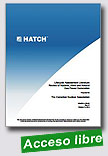 |
Lifecycle Emissions of Nuclear, Wind and Natural Gas Power Generation
Canadian Nuclear Association (CNA), October 9, 2014, 103 p.
The Canadian Nuclear Association (CNA) commissioned Hatch Ltd. to evaluate current literature on the carbon emitted by nuclear, wind and gas-powered electrical generation.
Hatch Ltd. is a global engineering and management consultancy, headquartered in Toronto, which serves several industries. Hatch’s energy unit has nine decades of continuous service in hydro, wind, solar, thermal and nuclear
|
power, and transmission and distribution.
Lifecycle analysis (LCA) is the study of an industrial process through all its stages, for example, of emissions at each stage from resource exploration to waste disposal. LCA is the most widely accepted, comprehensive measure of environmental performance.
LCA is a specialized analytical field, one that has evolved over time and that has generated its own technical and professional standards, such as ISO14040.
CNA Summary
Extraído de:
https://cna.ca/wp-content/uploads/2014/05/Hatch-CNA-Report-Summary-FINAL-English.pdf
|
 |
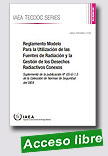 |
Reglamento Modelo Para la Utilización de las Fuentes de Radiación y la Gestión de los Desechos Radiactivos Conexos
IAEA TECDOC, 2015, 128 p.
El presente TECDOC tiene por finalidad asesorar a los Estados acerca de un conjunto apropiado de normas que abarque todos los aspectos de la utilización de fuentes de radiación y de la gestión segura de los desechos radiactivos conexos. También permite a los Estados evaluar la idoneidad de sus reglamentos y directrices reglamentarias. Se pretende abarcar todas las circunstancias relacionadas con las |
instalaciones y actividades en que se utilizan fuentes de radiación.
En este TECDOC se dan orientaciones sobre las cuestiones que deben ser tratadas en la política y la estrategia y en los reglamentos nacionales. Contiene ejemplos de textos que pueden servir de referencia y que se aducen para ayudar a las autoridades nacionales, los órganos reguladores y los expertos técnicos y jurídicos de un país que participen en la elaboración o el examen de reglamentos de seguridad radiológica.
Complementa la Guía de Seguridad GS-G-1.5 porque da consejos prácticos a los Estados en materia de elaboración de reglamentos para la utilización segura y el control de fuentes de radiación en medicina, industria, investigación, agricultura y educación, así como para la gestión de los desechos radiactivos conexos.
El TECDOC tiene por finalidad proporcionar a los Estados disposiciones modelo para los reglamentos que se deben formular con miras al control de las fuentes de radiación y a la gestión segura de los desechos radiactivos conexos. Es compatible con los Manuales de derecho nuclear que contienen disposiciones destinadas al marco legislativo, a los que complementa.
Extraído de:
http://www-pub.iaea.org/MTCD/Publications/PDF/TE-1732_S_web.pdf
|
 |
|
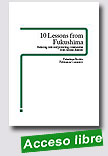
|
10 Lessons from Fukushima: Reducing Risks and Protecting Communities from Nuclear Disasters
Japan Civil Socitey Organizations (CSO) Coalition for 2015 WCDRR (JCC2015), March 11 2015,72 p.
We have created a booklet entitled “10 Lessons from Fukushima: Reducing risks and protecting communities from nuclear disasters”. This booklet, which is based upon the experiences and testimony of local people, outlines the reality of the Fukushima nuclear disaster, ten lessons from this which should be shared for considering future response and prevention.
|
This booklet was created through collaboration by many NGOs and researchers working to support those affected by the Fukushima nuclear power plant disaster in various ways. It includes columns regarding examples of what is really happening in Fukushima, and various international legal tools and standards which can be utilised to advocate for the rights of those affected by the disaster.
Extraído de: http://fukushimalessons.jp/en-booklet.html
|
 |
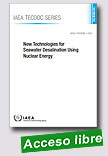 |
New Technologies for Seawater Desalination Using Nuclear Energy
IAEA TECDOC, 2015, 186 p.
This publication compiles the findings of research and development activities relating to new technologies to support seawater desalination using nuclear energy. An overview of current progress on low temperature technologies for seawater desalination is included. The publication also provides information on competitiveness and sustainability of seawater desalination using nuclear energy and a techno-economic feasibility study of nuclear desalination.
|
Extraído de:
http://www-pub.iaea.org/books/IAEABooks/10732/New-Technologies-for-Seawater-Desalination-Using-Nuclear-Energy
|
| |
| |
|
|
| |
|
|
|
| |
|
|
|
| |
|
|
|
|
|
